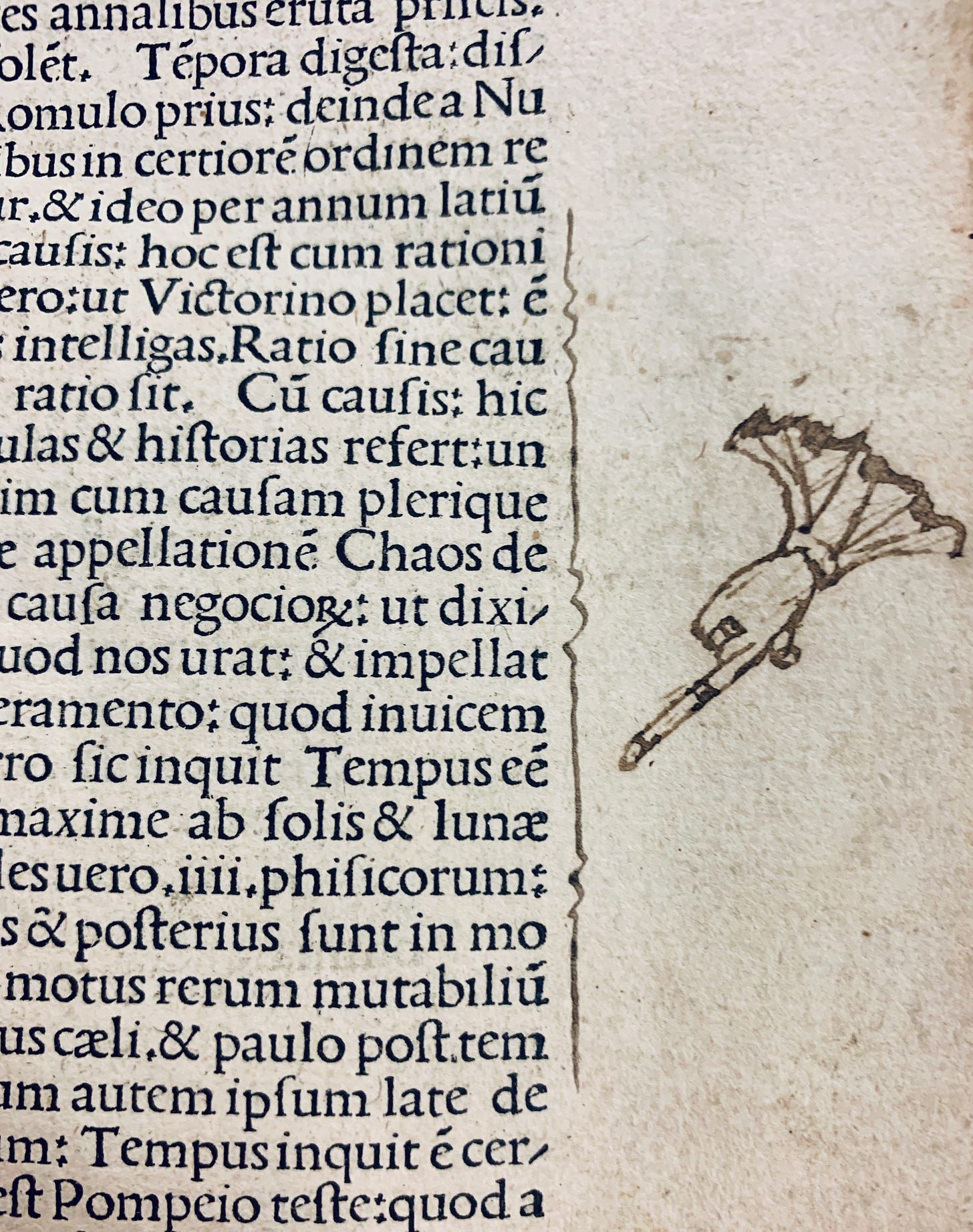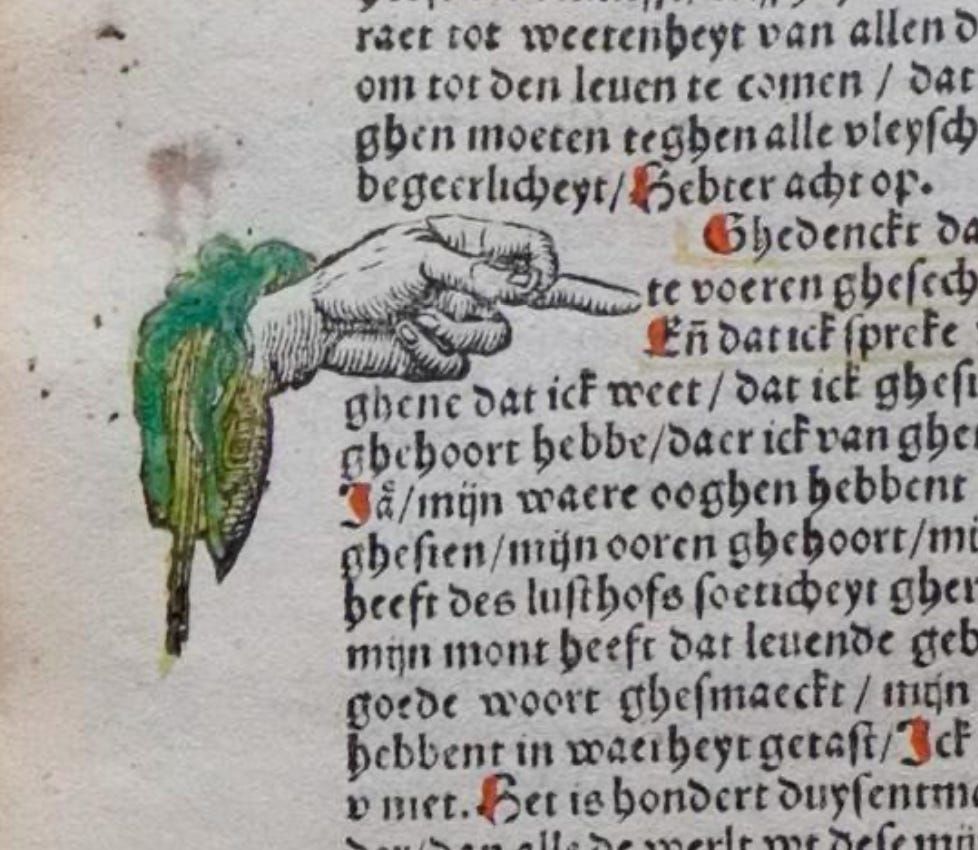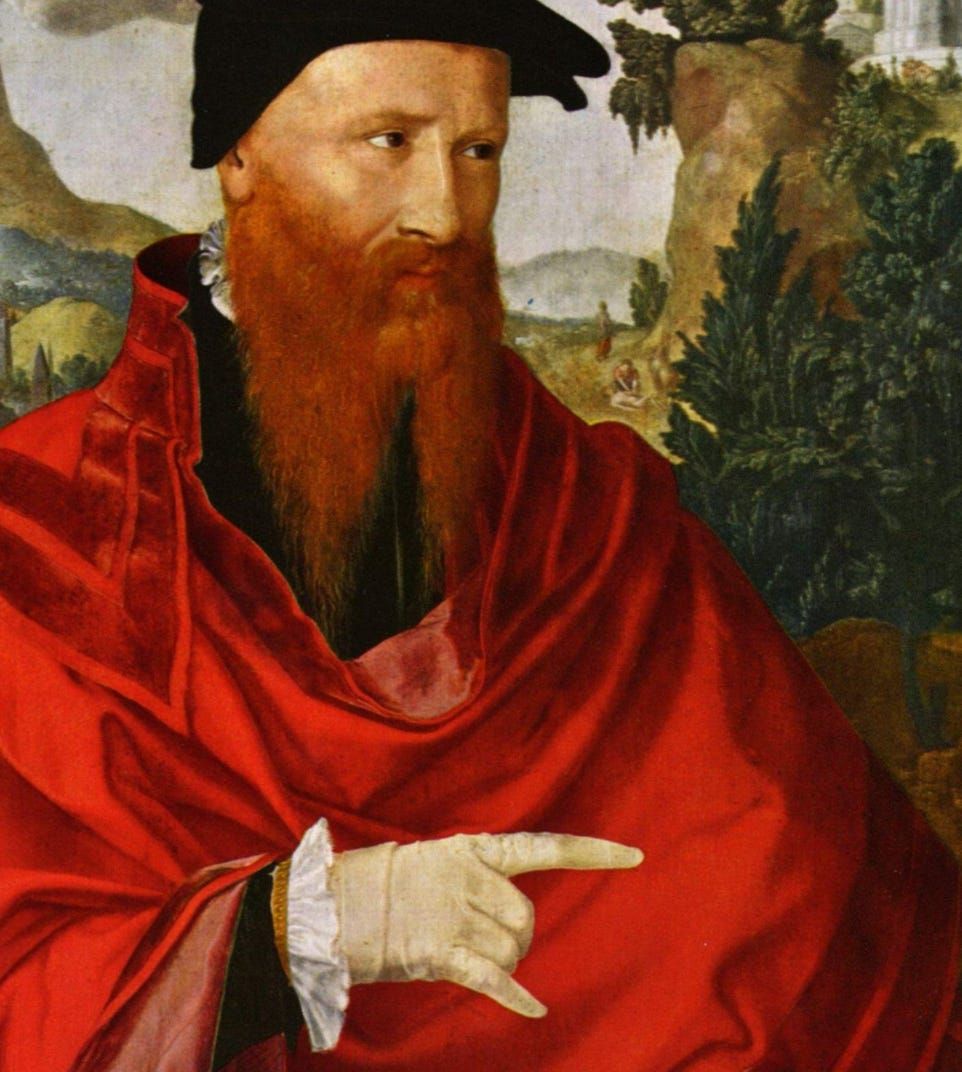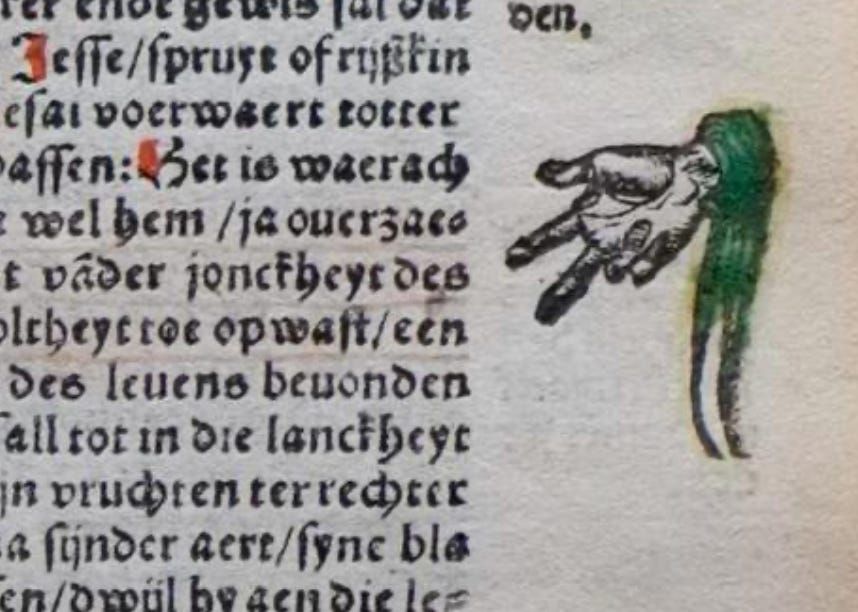In many books printed before 1500, there are pointing fingers in the margins. They indicate a passage that the reader found important. Nowadays, we use a highlighter for that - some students color entire pages bright yellow. Publishers then take this up by providing the text parts that absolutely must be memorized with a background color.

Around 1500, publishers did the same. The hand-drawn image that you added yourself is printed in the book by the publisher for you, as shown below.

The shift from self-drawn to printed is understandable. The earliest printers and publishers were usually simple craftsmen, and the books they produced were semi-finished products that primarily needed to resemble the manuscripts of the same period. It was only around 1490 that publishers became companies that could afford to hire scholars as editors and correctors. From that point on, the printed book quickly evolved from a mechanically produced manuscript into the book as we know it today.

The use of pointing fingers to indicate ‘this is an important passage’ seems fairly straightforward. The question is whether it really is that simple. Above, we see a portrait of the mystic and Anabaptist David Joris. Look at the gesture and then at the expression — it’s clear that there’s more going on here than just simply pointing at something with a finger. Sign language was a tradition in the early 16th century. The most beautiful description of its use can be found in Rabelais, when Panurge has a public discussion with an English humanist in a large auditorium of the Sorbonne. This discussion is conducted with gestures - and in this case, there are many more than just simple pointing with one or more fingers. The ‘Wonder-boeck’ of David Joris is full of pointing fingers and gestures. The additional meaning of these for the interpretation of the text, as far as I know, has not yet been explored.
